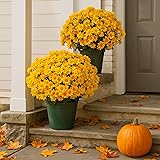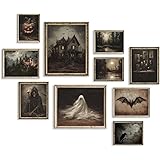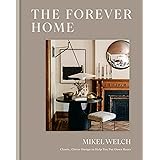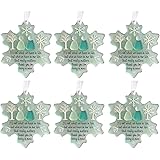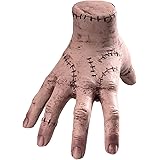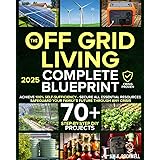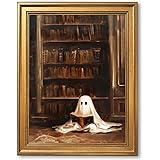Unpacking the Future of Home: Key 2025 Interior Design Trends and Predictions
As the interior design landscape continually evolves, discerning what truly defines a forward-thinking space can be both exciting and daunting. In her recent video, Kiva Brent offered her insightful, and at times, “controversial” predictions for 2025 interior design trends. Building upon her compelling observations, this guide delves deeper into the shifts poised to redefine our living environments, offering context, actionable advice, and a comprehensive look at what to embrace (and perhaps approach with caution) in the coming year.
Understanding these emerging themes is crucial for anyone looking to refresh their home or simply stay ahead of the curve. From revolutionary furniture concepts to a nuanced return of classic color palettes, the landscape of home decor in 2025 promises a blend of comfort, practicality, and personal expression. We will explore how these forecasted styles cater to modern living while allowing for individuality to shine through in every thoughtfully chosen element.
The Evolution of Comfort: Introducing the Modern Motion Sofa
For years, the mere mention of a recliner conjured images of bulky, aesthetically challenged furniture often relegated to a secondary living space. However, 2025 interior design trends signal a sophisticated transformation of this comfort staple: the motion sofa. This isn’t your grandparent’s recliner; contemporary versions seamlessly integrate reclining functionality into sleek, design-conscious profiles, proving that luxury and practicality can coexist harmoniously.
Leading brands, including Value City Furniture with its Designer Looks collection, Arhaus, and Restoration Hardware, are pioneering this shift. These manufacturers are expertly concealing the mechanics that once compromised visual appeal, offering pieces that look as good as they feel. Furthermore, these updated motion sofas are designed for modern living, often featuring integrated USB-C and USB-A charging ports, discreet cupholders, and even subtle lighting, all with intelligent cable management to maintain a clean aesthetic. This “all-in-one” approach addresses the desire for multifunctional furniture that supports relaxation, entertainment, and even productivity, without sacrificing an ounce of style. This trend is not merely fleeting; it represents a long-anticipated fusion of ergonomic comfort and refined aesthetics, making it a cornerstone for future living spaces.
Embracing the Blank Canvas: The Resurgence of White Walls
The early 2020s saw a widespread embrace of warmer, earth-toned paint colors, driven by the modern organic and wabi-sabi aesthetics. Individuals sought to bring the outdoors in, finding solace in hues of brown, cream, and muted green during a period when outdoor experiences were limited. While these cozy palettes remain beloved, 2025 interior design trends are poised to bring white wall paint back into the spotlight, not as a sterile default, but as a deliberate and powerful design choice.
White walls offer an unparalleled backdrop, allowing other elements within a room to truly sing. In an era where social media platforms have democratized art, making unique and original pieces by smaller artists more accessible than ever, a neutral canvas becomes invaluable. Imagine acquiring a striking piece of artwork for $50, $100, or $250—a fraction of the cost of a museum-grade piece, yet carrying immense personal value. White walls ensure that such treasured art, regardless of its color scheme, finds its perfect complement without competing with the wall color. This approach echoes the intentionality of art galleries and museums, which predominantly feature white or neutral walls to ensure the artwork remains the undisputed focal point, encouraging unhindered appreciation and allowing diverse pieces to coexist harmoniously within a single space.
A Spectrum of Style: Dominant Colors for 2025 Interiors
Color choices profoundly influence the mood and perception of a home. For 2025, a fascinating array of hues is predicted to dominate, each offering distinct psychological and aesthetic contributions to our living environments. These particular 2025 interior design trends emphasize both grounding comfort and invigorating accents, reflecting a nuanced approach to personal expression.
Grounding Spaces with Rich Brown Tones
Brown is rapidly emerging as a sophisticated successor to the cool, often sterile grays that defined previous decades. This earthy tone offers a grounding, inviting, and inherently sensual alternative, perfectly aligning with a renewed focus on natural materials and a desire for connection to the earth. Its recent popularity on fashion runways further solidifies its impending dominance in interior design, as trends frequently migrate between these two aesthetically linked industries.
Indeed, brown acts as an ideal foundation, providing a sense of stability and warmth. Evidence of its ascent is already visible in collections from designers like Arvin, whose Aurelia rug embraces rich browns, and Ashley Tisdale’s collaboration with Rugs USA. Beyond rugs, brown seamlessly integrates with existing warm palettes, complementing popular burgundies, creams, and ochres often seen in mid-century modern-inspired interiors. This versatility allows brown to bridge various design styles, fostering a cohesive yet dynamic look that feels both contemporary and timeless.
Burgundy’s Bold Statement: From Accent to Overload?
Burgundy has undeniably captured the attention of the design world, particularly appearing in countless influencer-designed powder rooms. This deep, rich red hue carries significant energy, making it a compelling choice for spaces intended to evoke vibrancy. Its popularity, however, comes with a caveat: red tones are inherently stimulating, and as Kiva Brent humorously recounted from her own high school experience, an entire room drenched in burgundy can quickly become overwhelming, detracting from spaces meant for rest or focused work.
While color drenching—the application of a single color across walls, trim, and sometimes ceilings—remains a strong trend for 2025, its combination with an intense color like burgundy demands careful consideration. Beyond the psychological impact, the practicality of maintaining large expanses of dark, color-drenched walls in high-traffic areas raises questions, especially in a powder room where cleanliness is paramount. For those drawn to burgundy’s allure, incorporating it through smaller, intentional accents is often more effective. Think burgundy pillow covers, bedding, a statement red lamp (playing into the “unexpected red theory”), or within carefully curated artwork. These subtle pops can infuse energy and sophistication without engulfing a space, allowing the color to elevate the design rather than dominate it.
Blue Hues: A Soothing Return to Grand Millennial Charm
After a period of reduced prominence, blue is poised for a significant comeback in 2025, largely driven by the burgeoning popularity of the Grand Millennial style. This aesthetic masterfully blends traditional elegance with contemporary touches, often featuring a harmonious palette of blue, green, and white. Its classic, often “Southern” appeal evokes a sense of home, comfort, and enduring charm, offering a less stimulating alternative to some of the more intense trends.
Blue, particularly in its navy or softer forms, inherently connects to nature, reminiscent of vast skies and calming waters. This makes it a naturally soothing color, frequently employed in spa environments to foster relaxation. Its resurgence aligns with a broader desire for inviting, cozy, yet understated interiors. This return to blue is manifesting across various decor elements, from newly released rugs to art pieces and even mass-market items, as evidenced by IKEA’s recent release of its Lindbyn mirror in a striking blue. Unlike the moody greens that have dominated in recent years, blue offers a lighter, more uplifting quality, promising to infuse spaces, especially bedrooms and kitchens, with a sense of calm and effortless elegance that elevates the overall design.
Reflecting Style: The Impact of Mini and Mismatched Mirrors
Following the 2024 trend of mini artwork, 2025 interior design trends introduce the mini mirror—a divisive yet intriguing design element. While petite decor can be inherently charming and more affordable, allowing for greater visual interest on a budget, its practicality, especially in functional spaces like a primary bathroom, is questionable. A tiny mirror above a vanity can compromise its utility, making everyday tasks like applying makeup inconvenient. For secondary powder rooms or hallways, however, a mini mirror can serve as a whimsical accent, offering a quick glance without being the main event.
In contrast to the miniature trend, a more celebrated direction involves the use of mismatched and statement mirrors. Propelled by the joy of vintage shopping, individuals are curating unique pieces—from 70s funky designs to ornate 18th-century frames—and integrating them into modern homes. This trend embraces individuality and encourages bold choices in scale and form. We can expect to see mirrors that are intentionally oversized for their placement, creating a dramatic visual “moment” above a modest pedestal sink or as a striking focal point in a living room. This approach emphasizes mirrors not just as reflective surfaces but as sculptural art pieces, celebrating unique shapes (squiggly, irregular), vibrant colors, and rich historical narratives, ultimately adding depth and personality to any interior.
The Cool Comeback: Chrome and Silver Accents
For many seasons, warm metallic accents, particularly gold, have reigned supreme in interior design. However, a significant shift is underway, with 2025 interior design trends heralding the return of cool metals: chrome, steel, and silver. This re-emergence is a natural consequence of the increasingly warm palettes seen in paint and furniture—think browns, burgundies, creams, and ochres. To prevent spaces from feeling overly saturated or heavy, designers are strategically reintroducing cool metals to provide essential contrast and balance.
Chrome and silver introduce a crisp, refreshing coolness that can instantly modernize a space and prevent it from becoming visually overwhelming. These metals are appearing in subtle yet impactful ways: as accents in lighting fixtures, mirror frames, and the hardware of seating like recliners or iconic Wassily chairs. For homeowners looking to embrace this trend on a budget, simple updates such as switching out faucets or cabinet handles can dramatically alter a room’s aesthetic. However, careful consideration is advised; if a home already features predominantly cool tones or a black-and-white scheme, adding more chrome might create a sterile environment. Instead, this trend is best utilized in homes seeking to temper existing warmth, providing a sophisticated, contemporary edge.
Timeless Charm: The Modern Vintage & Cottagecore Revival
The “modern vintage” or “elevated cottagecore” aesthetic is gaining significant traction, defining a cozy yet sophisticated interior style for 2025. This trend reimagines the rustic charm of a cabin or cottage, infusing it with refined elements and a curated sensibility. It’s a look that prioritizes warmth and comfort, often incorporating inviting color palettes that include the popular blues and burgundies we’ve discussed, alongside classic greens and creams.
This design movement is characterized by a romantic appreciation for architectural details and traditional elements. We are seeing a delightful comeback of ornate ceiling medallions, stately mantelpieces, and, perhaps most notably, thoughtfully styled bookcases filled with actual books rather than just decorative objects. This focus on tangible literature reflects a deeper appreciation for history, narrative, and quiet intellectual pursuits. While the cottagecore aesthetic exudes undeniable charm and coziness, its successful integration often hinges on the home’s existing architecture. A grand, modern dwelling might struggle to naturally accommodate this style without extensive renovation, whereas older homes with inherent character can embrace it seamlessly. Ultimately, modern vintage offers a deeply welcoming and aesthetically rich environment, perfect for those who seek comfort, nostalgia, and a personal narrative within their living spaces.


